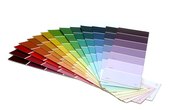
Whether in manufacturing, cooking or cleaning, substances are most efficient when they're pure. Purity can be defined as the absence of any impurities -- or types of matter other than the substance itself. You can use numerous tests to check for purity, ranging from simple visual comparison to sophisticated laboratory techniques.
Physical Comparison With a Pure Standard
One of the simplest ways to check the purity of any substance is to compare the substance with a certified pure sample. Even physical comparisons can reveal a lot about the purity of a sample. Visual comparison can reveal the presence of any large impurities, such as dirt or other differently colored impurities. If the substance is nontoxic, a smell test can be used to compare it with the pure sample. Any dissimilar odors indicate the presence of at least one impurity. If the substance is edible, a taste test can be conducted. A difference between the taste of the substance and the taste of the pure sample hints at the presence of impurities.
Melting and Boiling Point Determination
The physical properties of a substance can be used to establish its purity. These properties include the melting point and boiling point. Different substances tend to have different melting and boiling points, and any pure substance will have a specific melting and boiling point. However, the presence of impurities will cause a lower melting point as well as a change in boiling point.
Colorimetric Methods
There are many colorimetric methods for determining whether a substance is pure or if there are impurities present. These usually involve the use of a chemical for detecting the presence of common impurities, which will turn the chemical a certain color. These methods are simple and are usually designed to determine the presence of impurities, not to determine the amount or the percent purity of the substance. One common use of such colorimetric methods is in forensics, where color tests are frequently used to identify illegal drugs as well as to determine their purity.
Analytical Methods for Testing Purity
The most accurate means of determining the purity of a substance is through the use of analytical methods. These methods, widely used in different industries, mostly involve chemical analysis, which can pinpoint the presence, identity and amount of impurities in the sample. The most simple chemical methods include gravimetry and titration. There are also the more advanced light-based or spectroscopic methods, such as UV-VIS spectroscopy, nuclear magnetic resonance and infrared spectroscopy. Chromatographic methods, such as gas chromatography and liquid chromatography, can also be used. Other methods used in testing the purity include mass spectroscopy, capillary electrophoresis, optical rotation and particle size analysis.
References
- University of Calgary: Organic Laboratory Techniques 4: Melting Point
- University of Calgary: Organic Laboratory 5: Boiling Point Determination
- U.S. Food and Drug Administration: Guidance for Industry: Characterization and Qualification of Cell Substrates and Other Biological Materials Used in the Production of Viral Vaccines for Infectious Disease Indications
About the Author
Joshua Suico is a university teacher specializing in chemistry and the life sciences. He holds a Master of Science degree in chemistry. During his college days, he once intentionally dropped sodium pellets into a sink for fun and for science.
